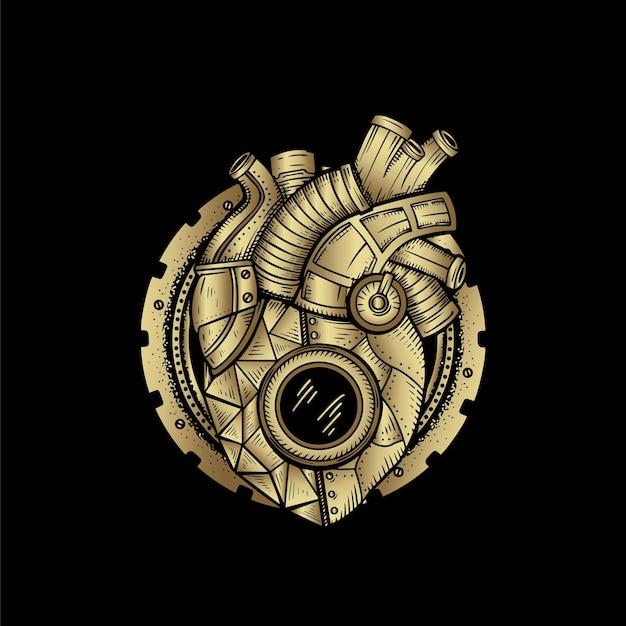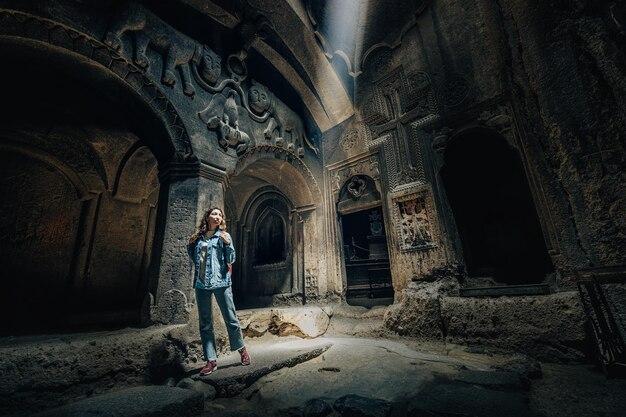The Renaissance period, which spanned from the 14th to the 17th century, brought forth a revolutionary surge in artistic expression. This captivating era gave birth to remarkable works of art that continue to captivate and inspire us today. In this blog post, we will delve into the major themes that defined Renaissance art, examine the characteristics of this period, and explore the illustrious artists who shaped this remarkable movement.
What were the major themes in Renaissance art? How did artists during this time redefine creativity and push the boundaries of artistic expression? Join us as we embark on a journey through time to uncover the fascinating world of Renaissance art. From the exploration of humanism and nature to the portrayal of religious devotion and mythological narratives, we will explore the diverse themes that fascinated and inspired Renaissance artists.
Let us uncover the remarkable achievements of masters such as Leonardo da Vinci and Michelangelo, and their contributions to this era of artistic renaissance. Alongside these iconic figures, we will also discover lesser-known artists who played integral roles in shaping the face of Renaissance art.
Are you ready to delve into an era of immense creativity, innovation, and beauty? Join us as we dive into the enchanting world of Renaissance art, where the past comes alive and artistic imagination knows no bounds.
So, sit back, relax, and prepare to be transported to a time when extraordinary artistry defied the constraints of reality. Whether you are an art enthusiast, history buff, or simply curious about the wonders of the past, this blog post will surely ignite your passion and leave you inspired by the Renaissance masters and their timeless creations.
What were the Major Themes in Renaissance Art
The Renaissance was a period of creativity, artistic innovation, and cultural transformation that swept across Europe from the 14th to the 17th century. During this time, artists pushed the boundaries of traditional art and explored new techniques, styles, and subjects. In this subsection, we will explore the major themes that characterized Renaissance art.
1. Humanism: A Celebration of Humanity
Humanism was a central theme in Renaissance art, reflecting a newfound fascination with the beauty and potential of the human form. Artists sought to capture the idealized human figure, emphasizing realism and proportion. This can be seen in works like Leonardo da Vinci’s “Vitruvian Man,” which perfectly captures the harmony between the human body and geometry.
2. Religious Devotion and Iconography
Religion played a significant role in Renaissance society, and religious themes were prevalent in artworks of the time. Artists depicted biblical stories, saints, and religious figures in a visually striking manner, seeking to inspire piety and devotion in viewers. One iconic example is Michelangelo’s breathtaking ceiling frescoes in the Sistine Chapel, which depict scenes from the Old Testament.
3. Mythology and Classical Antiquity
The Renaissance was also a revival of interest in ancient Greek and Roman culture. Artists drew inspiration from mythology and classical texts, creating artworks that celebrated the gods, goddesses, and heroes of antiquity. Botticelli’s “The Birth of Venus” is a remarkable example, capturing the mythological birth of the goddess of love in a graceful and ethereal manner.
4. Nature and the Natural World
Renaissance artists had a deep appreciation for nature, and landscapes and natural elements often featured prominently in their works. They sought to depict the world around them with meticulous detail and realism, bringing landscapes, animals, and botanical subjects to life. Flemish painter Pieter Bruegel the Elder’s “The Hunters in the Snow” is a vivid example of the beautiful and evocative landscapes of the time.
5. Portraits and Individuality
Portraiture also emerged as a significant theme during the Renaissance. Artists began to focus on capturing the unique characteristics and personalities of their subjects, showcasing individuality rather than simply creating generic representations. One of the most famous portraitists of the period was Hans Holbein the Younger, whose detailed and lifelike portraits of influential figures such as King Henry VIII are still cherished today.
6. Symbolism and Allegory
Renaissance artists often incorporated symbolism and allegory into their works, using visual clues and hidden meanings to convey messages or ideas. Paintings would contain hidden symbols and references, inviting viewers to engage in thoughtful interpretation. For example, Jan van Eyck’s “The Arnolfini Portrait” is rich in symbolic elements that offer insights into the status, wealth, and marital symbolism of the depicted couple.
7. Scientific Exploration and Perspective
The Renaissance was a time of great scientific discovery and intellectual curiosity. Artists began to experiment with perspective, light, and shadow, resulting in more realistic and three-dimensional artworks. This can be seen in the works of artists like Masaccio, whose frescoes in the Brancacci Chapel exemplify the use of linear perspective to create a sense of depth and spatial realism.
In conclusion, the major themes in Renaissance art were characterized by a celebration of humanity, religious devotion, mythology, nature, portraiture, symbolism, and scientific exploration. These themes reflected the cultural, intellectual, and artistic developments of the time and continue to inspire and captivate audiences even in the modern era.
FAQ: Renaissance Art – Unraveling the Majestic Masterpieces
Who Was the First Master of the Renaissance
The Renaissance was a golden age for artists, with many talented individuals leaving their mark on history. One of the earliest and most influential masters of the Renaissance was Giotto di Bondone. He is widely regarded as the first painter to break away from the rigid style of the Middle Ages and introduce a more naturalistic approach to art.
What Are Five Captivating Characteristics of the Renaissance
-
Humanism: Renaissance art celebrated the beauty and potential of the human form. Artists sought to depict the human body in a more anatomically accurate and lifelike manner.
-
Perspective: Aha, the magic of depth! Renaissance artists discovered the art of using perspective in their paintings, creating the illusion of three-dimensional space. It was like turning on the 3D glasses of the past!
-
Realism: Move over, flat and two-dimensional artwork! Renaissance artists strived to capture the world realistically, infusing their paintings with incredible detail and lifelike qualities.
-
Light and Shadow: Masters like Leonardo da Vinci and Caravaggio embraced the interplay of light and shadow, adding a dramatic touch to their compositions and imbuing them with a sense of depth and realism.
-
Classical Influence: Ah, the rebirth of the classics! Inspired by the ancient Greeks and Romans, Renaissance artists sought to revive classical themes, subjects, and styles in their work. It was like having a time machine, but without all the complicated mechanics!
Who Stole the Beloved Mona Lisa
Oh, the infamous case of the stolen Mona Lisa! In 1911, a crafty individual named Vincenzo Peruggia performed the daring heist of the century. He swiped Leonardo da Vinci’s Mona Lisa from the Louvre Museum in Paris, leaving the world in shock and the art community in disarray. Thankfully, the beautiful lady with the enigmatic smile was recovered and returned to her rightful place shortly after. Talk about a suspenseful plot twist!
Who Isn’t a Household Name in Renaissance Art
While the Renaissance boasts its fair share of artistic giants, not everyone can be a superstar, right? One lesser-known artist from the Renaissance period is Bartholomeus Spranger. Though not a household name like Leonardo or Michelangelo, Spranger was a highly skilled painter and draughtsman, known for his sensual and mythological works. So, while not on the tip of everyone’s tongues, he still managed to make his mark in the annals of art history.
Can I Create and Sell Paintings of Celebrities
Ah, the allure of celebrity portraits! It’s a question many aspiring artists ask. The answer? Just like the Renaissance masters who depicted powerful figures of their time, you are free to paint and sell pictures of celebrities. However, do tread carefully, my friend. Intellectual property rights may come into play if you try to profit from these artworks without proper permissions. So, remember to snap that canvas with a spoonful of creativity, a dash of talent, and a sprinkle of legality.
What Were the Majestic Themes Explored in Renaissance Art
Renaissance art was a tapestry woven with captivating themes that reflected the spirit and ideals of the time. Some of the major themes embraced by Renaissance artists include:
-
Religion: The Church played a significant role in the patronage of art during this period, leading to a plethora of religiously-themed artworks, from biblical narratives to depictions of saints and angels.
-
Mythology: Inspired by the tales of old, artists sought inspiration from mythology, bringing gods, goddesses, and mythical creatures to life on their canvases. It was like having a front-row seat to an epic play!
-
Portraiture: Renaissance artists skillfully captured the likeness and personality of their subjects through portraiture. From mighty rulers to mysterious muses, these portraits allowed a glimpse into the lives of the influential and intriguing.
-
Nature and Landscape: Explorations of the natural world found their way onto the canvas, with artists embracing the beauty of the great outdoors. Botanical studies, landscapes, and scenes of daily life breathed life and freshness into the artistic scene.
Did Michelangelo Ever Cross Paths with Leonardo da Vinci
Ah, the meeting of artistic giants! While both Michelangelo and Leonardo da Vinci were prominent figures in the world of art, there is no historical evidence to suggest that they ever met face to face. It’s a shame, really, as one can only imagine the creative fireworks that would have erupted from such a fascinating encounter. But fear not, their individual contributions to the Renaissance were monumental enough to leave an everlasting impact on the art world.
What Elements Defined Renaissance Art
Renaissance art was a symphony of various elements that harmoniously came together to create masterpieces. Here are some key elements that defined Renaissance art:
-
Proportion and Symmetry: Renaissance artists emphasized the use of mathematical principles to achieve harmonious proportions and balanced compositions.
-
Contrapposto: Oh, the allure of elegant poses! The technique of contrapposto, with its subtle shifts in weight and graceful stances, added a naturalistic and dynamic touch to sculptures and paintings alike.
-
Color and Light: Renaissance artists skillfully employed color to evoke emotions and create a sense of depth. The interplay of light and shadow added drama and dimension to their creations.
-
Perspective: The discovery and application of linear perspective brought a whole new dimension to Renaissance art. This technique allowed artists to create a sense of depth and realism, transporting viewers into the heart of the painting.
-
Symbolism: Ah, the secrets hidden in plain sight! Renaissance artists often infused their works with hidden meanings and symbols, inviting viewers to decode the deeper messages within their art. It was like being part of a secret society!
So there you have it, dear art enthusiasts! A riveting FAQ journey into the world of Renaissance art, uncovering its fascinating themes, legendary artists, and defining characteristics. Let your imagination roam free, and may the passion of the Renaissance inspire you to create art that moves hearts and minds, even in the modern era.

